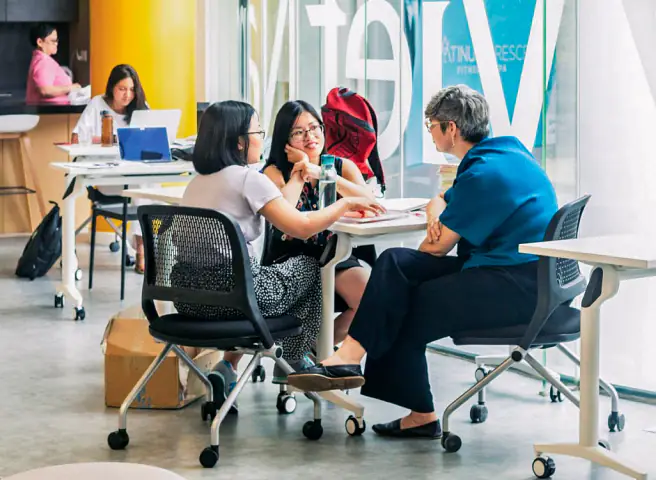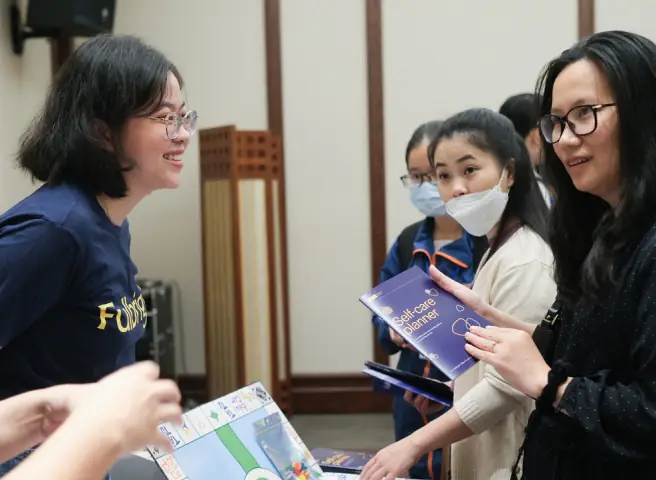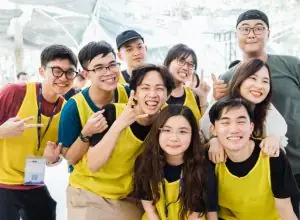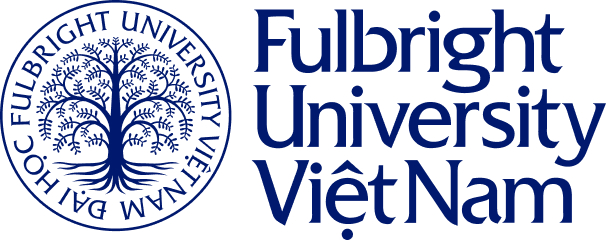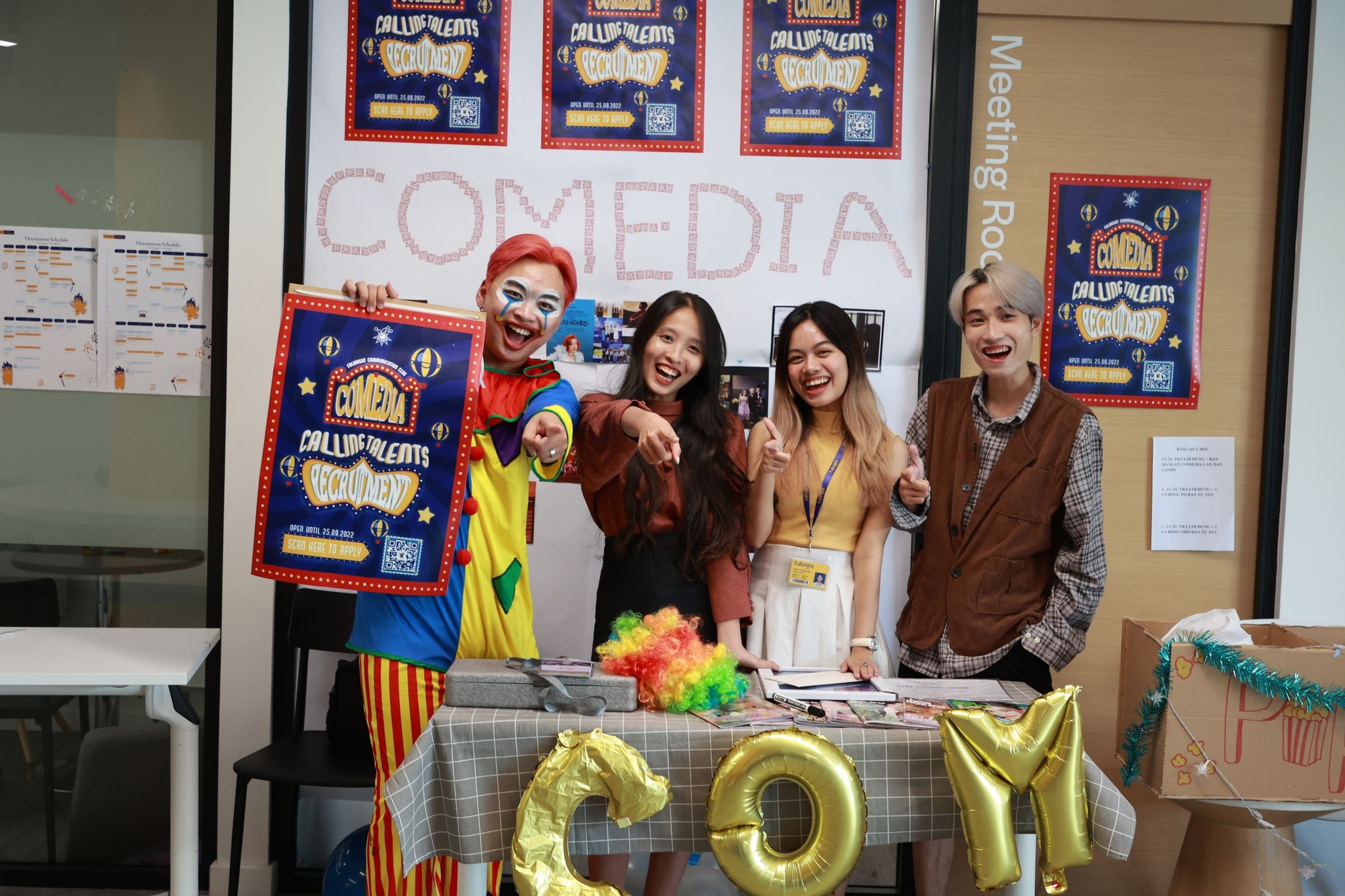
Creating and Making is one of the 6 core courses of the Undergraduate Academic program at Fulbright University Vietnam. The course’s purpose is to develop for Fulbright students an understanding of design thinking and the design process.
Staying true to the Co-Design Year spirit, Co-Design Year students worked closely with faculty members to design and test out this module before launching it for the upcoming academic year 2019-2020.
One of the most unique aspects of this course is that the students have to design an actual product: something that can help an 8-year-old play and learn at the same time. The result of the course is not determined by the professors but the real product-users.
After successfully weathered out the first two modules at Fulbright University Vietnam, I was so sure that the Creating and Making class would be a plain sailing.
Looking back, I realized how wrong I was. That class has to be the hardest one for me so far; yet it was the most memorable one in my Liberal Arts Education journey.
During the first two weeks of the module, I thought I had just ventured out into a new universe. Geometry was like a foreign language to me.
Thus, while my classmates could draw 3D sketches in a wink, I had to struggle and re-learn the subject. I was totally clueless when the class discussed about aesthetic beauty in arts and science.
On the other hand, getting into uncharted waters helped me learn a lot. One thing I realized is that there are many ways to generate new design ideas; one of them is the method called Shaping the Idea. One can use this method to either solve a problem or design/create a new product.
The secret is to know how to combine the two extremes: one extreme is a feasible but dull idea; the other extreme is an innovative idea but impossible to execute. The objective is to derive from the two extremes a new idea, which will be realistic but still be creative.

The class not only taught me new knowledge but also opened my eyes to new environments: Ho Chi Minh City University of Science’s Makerspace and Goldeneye Technologies Company.
It was my first time seeing for myself how a 3D printer worked in real life, how a robot could stand up after falling down, and what a voice-activated globe was. Most excitingly, I had the chance to meet new innovators – those who turned passion into a profession, and turned soulless machines into meaningful ones.
At Fulbright University Vietnam, we do not just learn new theories; we have to put it into practice. The last two weeks of the module was when we had to deliver our group project: design a toy for an eight-year-old child to help him/her learn while playing.
To create such product, we first had to think of the main subject field we wanted to focus on and then assembled into different groups to Sprint. Yet, the hardest obstacle for us was the age gap: we felt that we were too “old” to understand eight-year-old children.
Because of the age gap, many groups had to conduct user experience surveys while fine tuning their ideas. Series of conversation with eight-year-old children took place so that the design team could better understand the users and make appropriate changes.

For example, my Gender Equality group, including Minh Ha and I, had to constantly run ideas through their eight-year-old twins partner to make the ideas more appealing to that age group. We then decided to tweak our idea from essay style to cartoon style to capture the users’ attention.
Xuan Hinh from the Environmental Protection group shared: “The children cannot remember how to sort out different types of trash. They don’t know which can be categorized as organic or inorganic waste materials.
Yet, when I showed them that waste such as banana peel is organic waste material, they remembered right away.”
These last two weeks were also when I realized how important the theories, which we were taught in the first two weeks, were. These were hard theories to digest but they helped us so much during idea generating process.
My Gender Equality group applied the Shaping the Idea method in our process. We took into account the impossible but fun idea of fighting monsters from the universe and the reality that eight-year-old children love watching Youtube videos to form our product idea: an interactive game in which the players have to look for superheroes to defeat monsters and win back Youtube.
Other skills we learned from the outside mentors were also helpful during product development process.
For example, the Interactive group used the technology of laser cutting to create an acrylic map. The Budget Management team applied 3D design technique to print different types of coins for their board game. The Music team used their carpentry skill to build a Ukulele with the same quality as the ones sold in the market.
However, the best memory for us was that we were the first students to experience the Makerspace at Fulbright University Vietnam. The Makerspace was supposed to be another classroom.
Yet, our professors turned it into this amazing space for us to let our imagination and creativity run free with all the equipments we could ask for. This Makerspace was where our ideas came into fruition.
For example, it provided the space and tools for the Environmental Protection group to build electric circuits for their pop-up book.
I learned a lot from the Creating and Making course but what I found most relevant was to always put the users at the heart of everything. Only from a full understanding of the target audience, we can better fine tune the original idea and create a more meaningful product.
This mindset can be applied to everything in life, not just in design. One clear example is that to find a solution for a social issue, one has to understand the need of the society first. No matter how fitting you think your solution is, if the society rejects it, it is still meaningless.
Pham Nguyen Dan Tam
Student of Co-Design Year
